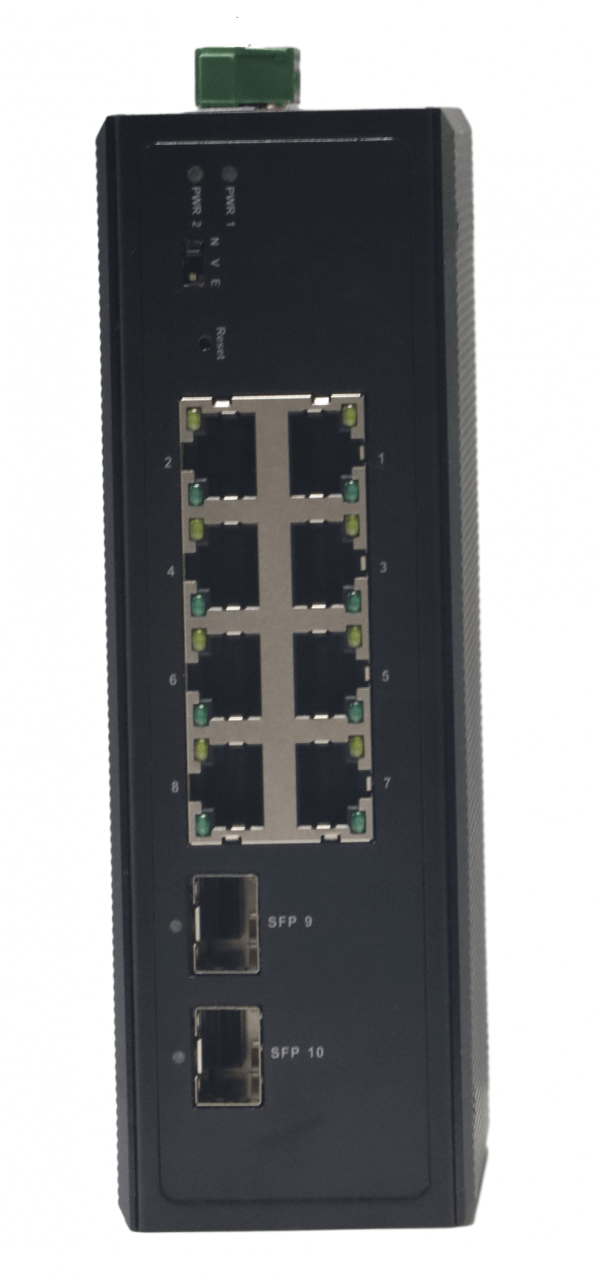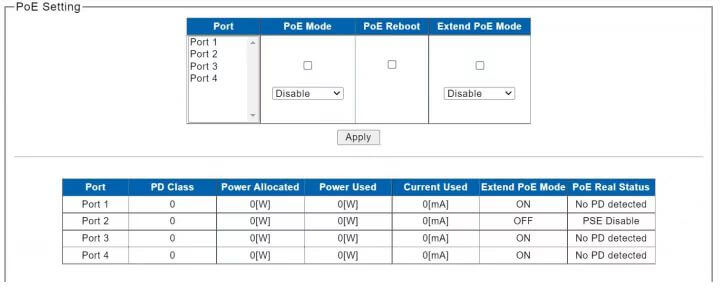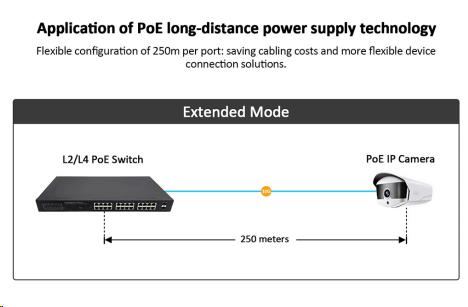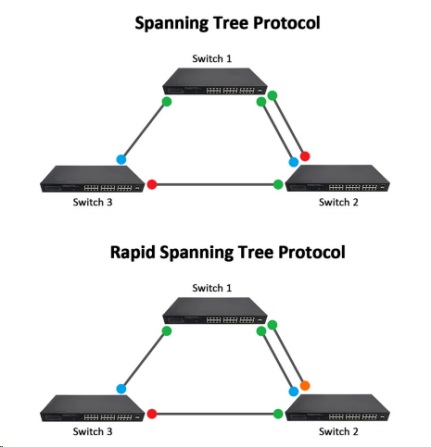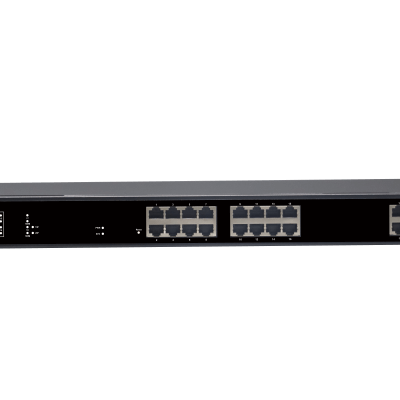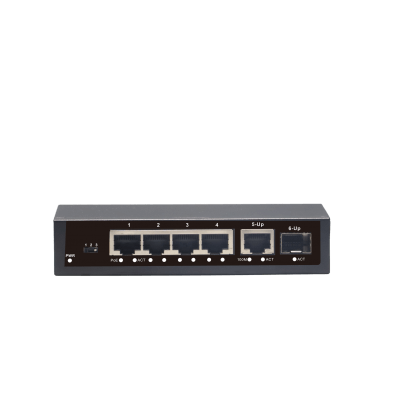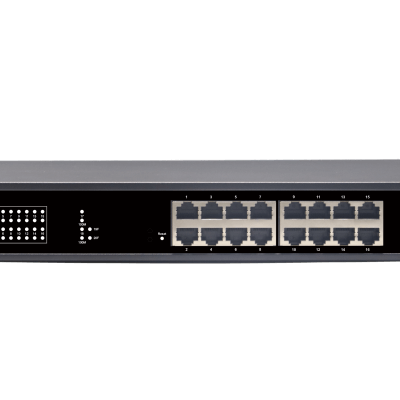LK8010P8c2FM integrates the simplicity of unmanaged switches with the performance and reliability of managed switches to provide a cost-effective solution for users to integrate management at the edge of their network.
Auto PoE power adjustment for safety and energy saving
The PoE port of the Lite management switches support 802.3af and 802.3at, providing up to 30W power supply to the connected device. The switches will negotiate with the connected devices to automatically adjust the PoE power, thereby saving energy. In addition, when the PoE port is connected to a PC, DVR, or other non-PoE device, the switch will automatically identify the device and will not output power to such device to ensure equipment safety.
PoE and Data Transmission up to 250M
The 4 ports lite management PoE switch can configure Extend PoE mode of each port on the web interface. In the “Extend PoE” operation mode, operates on a per-port basis at 10Mbps full duplex operation and can support 8~15-watt PoE power output over a distance of up to 250 meters, overcoming the 100-meter limit on Ethernet UTP cable.
VLAN for Broadcast Storm Control
The lite management PoE switch provides convenient and flexible VLAN division, which can automatically divide different VLANs according to the type of equipment connected to the port, so that the surveillance network and data network do not interfere with each other, improving the stability of the entire network. This can help to prevent the IP camera’s multicast or broadcast storm from influencing each other, thus fully meeting the requirements of the IP surveillance systems and Ethernet projects.
STP/RSTP
The lite management PoE switch has Spanning Tree Protocol (STP) / Rapid Spanning Tree Protocol (RSTP) options. Predominantly used to prevent layer 2 loops and broadcast storms and is also used for network redundancy. It was developed around the time where recovery from an outage that took upwards of a minute or more was acceptable. Throughout the years, as technology improved and critical applications relied on stable connections, businesses moved away from these long recovery times and looked for faster solutions.
Open Network Video Interface Forum(ONVIF)
ONVIF refers to Open Network Video Interface Forum. ONVIF compliant devices can stream video over the Internet to compatible clients, providing a standard for interfaces between devices based on different IPs. The ONVIF protocol gives you the flexibility to pick the Camera, NVR, Video decoder, etc. that best suits your needs without being limited to a specific brand.
Dynamic Host Configuration Protocol(DHCP)
Dynamic Host Configuration Protocol (DHCP) is a client/server protocol. Client uses the DHCP to acquire configuration information, such as an IP address, a default route, and one or more DNS server addresses from a DHCP server. It automatically provides an Internet Protocol (IP) host with its IP address and other related configuration information, the process is automatic and managed centrally.
Link Aggregation Control Protocol(LACP)
LACP is used to bundle and maintaining multiple physical links into one logical link to increase bandwidth and improve link redundancy. LACP allows switches to dynamically negotiate and establish aggregation groups, and can automatically redistribute traffic when a link fails, thereby improving network reliability and performance.

